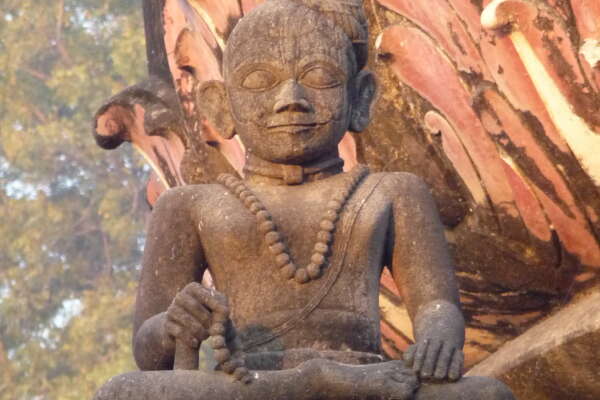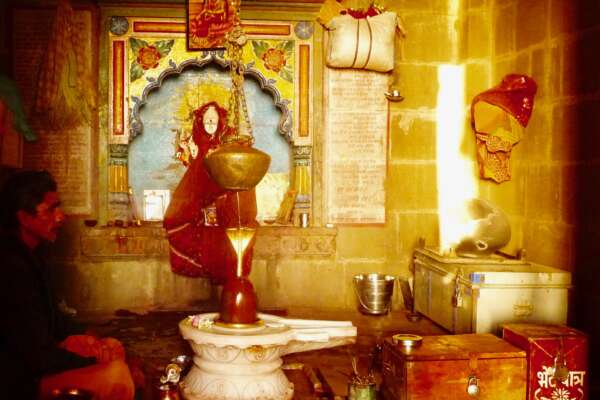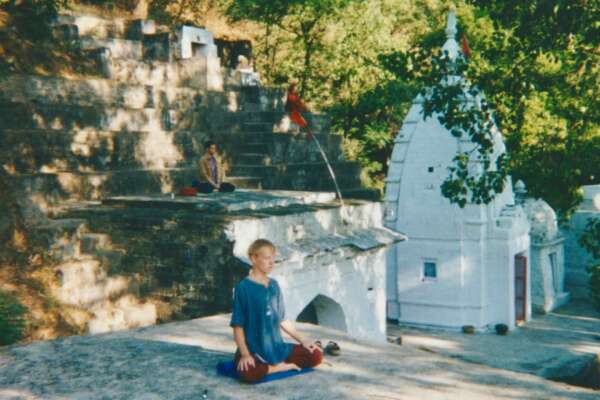Pranayama
Insight Yoga
There is one way of breathing that is shameful and constricted. Then there’s another way; a breath of love that takes you all the way to infinity.Jalāl ad-Dīn Muhammad Rūmī.Right from the very beginning of my Yoga journey, I have studied and emphasized prāṇāyāma in my practice. I have been focusing on and studying prāṇāyāma, yogic breath-control and energetic manipulations since 1996, and have studied prāṇāyāma with teachers from many traditions.These techniques moved right into the centre of yoga-practices in the Haṭha Tradition,which had its beginnings about 1000 years ago. In modern times, both medical doctors and psychologists have become increasingly aware of the importance and potential of using breath-work.Every powerful tool, if used without real understanding and skill, can be rendered ineffective and even cause harm in extreme cases. This is why there needs to be a thorough understanding of the breathing apparatus, the energetic possibilities and the psychological outcomes of breath-work.My main influences are the Bihar School of Yoga and Clive Sheridan. Like āsana-practice, I emphasize the therapeutic aspects a lot and help my students to find the most appropriate way to practice with their individual constitutions and present states.
My prāṇāyāma teaching aims at including and balancing several approaches:Authentic practice based on scriptural studies and explorative personal experience and appropriate modifications Sound theoretical understanding and confident practical application Developing a regular Self Practice and learning how to teach prāṇāyāma Working with all the Koshas This is what I have studied in-depth and offer through a careful, structured and informing way of teaching, both in teacher training programs and workshops/ immersions. Here is an overview of the major aspects/topics I share and explore with students:
Introduction
- Intention of this Module
- Acknowledgements
- Sanskrit
- Invocation
What is Prāṇāyāma?
- Definition
- Traditional Background and Source Material
- Why practice it?
Anatomy of Breathing
- The central Role of Breathing
- Two kinds of Breathing
- Main Breathing Organs
- Main Breathing Muscles
- The Physiology of Breathing
- Common Pathologies
Models of the Energy-Body in Tantra and Haṭha Yoga
- Pañca Kośa: ‘The five Sheaths’
- Prāṇamaya-Kośa: ‘The Life-Force-Made Sheath
- Nādīs: ‘Energy Channels’
- Panca Vāyu: ‘The Five Winds‘
- Cakras: ‘The Vortices‘
- Two Viewpoints
- Modern Research Attempts
- Conclusion
- Agni: ‘The Digestive Fire’
- Kundalinī Śakti: The ‚crooked Energy of Creation’
The basic Energetic Effects of Prāṇāyāma-Techniques
- The Tai Jitu: Energetic Harmony & Balancing
- Temperature: Warming or Cooling
- Activity: Stimulating or Calming
- Enhancing Concentration and being Present
- Massaging yourself through Breathing
- Practical Application and planning a Prāṇāyāma-Session
Useful Preparations and Warm Ups for Prāṇāyāma
- The Lung Meridian
- Warming Up the Breathing Muscles
- Do-In: ‘Tapping’
- Tapping the Lung Meridian
- Tapping other useful areas for Breathing
- Chi Kung-inspired Warm Ups
- Kati Cakra
- Hua-Gong Flow
- Lifting Clouds
- Throwing the Net
- The Crane
- Āsana-inspired Warm Ups
- Garuḍa-Arm-Variations
- Bird Poses
- Easy Prāna Mudrā Stretches
- Side-Extensions and Twists
- Hip Openers
- Assuming your Seat
- Prop Use
- Finding the most appropriate Seated Pose for your Needs
- Other useful poses for certain Prāṇāyāma-outcomes
- Feeling the Breath and Developing Concentration
- Ānāpāna Sati Variations
- Methods of deepening Concentration
Controlling your Breathing-Muscles
- Diaphragmatic Breathing
- The Diaphragm
- Supporting Muscles and Movements
- Different Set-Ups and Versions
- Thoracic Breathing
- The upper Respiratory Muscles
- Different Set-Ups and Versions
- Full Yogic Breathing
- Smooth Waves
- Different Set-Ups and Versions
- Playing the Breathing-Orchestra
- Get Rhythm
- Your instruments
- The length of notes
- Pauses
- Crescendo vs Addagio
Useful Mudrās and Bandhas
- Mudrā – ‘[Energetic] Seal’
- Nabho Mudrā: ‘The Sky Seal’
- Prāṇa Mudrā: ‘The Life Force Seal’
- Nasagra and Viṣnu Mudrā: ‘The Nose Seal’ and ‘Viṣnu’s Seal’
- Jñāna and Cin Mudrā: ‘The Seal of Insight‘ and ‘The Seal of Mind’
- Śāmbhavi Mudrā: ‘Śiva’s Seal’
- Ṣanmukhī Mudrā: ‘The Seal of Closing the seven Openings’
- Bandhas – ‘Locks/Fetters’
- Mūla-Bandha: ‘Root Lock’
- Jālandhara-Bandha – ‘Net Lock’
- Uddīyāna-Bandha – ‘Upward-Flying Lock’
- Kumbhaka – ‘Like a Pot [Stopping the Flow of Breathing]’
- Antara Kumbhaka: ‘Like a Pot inside [Holding the Breath in]’
- Bahya/Bahira Kumbhaka: ‘Like a Pot outside [Holding the Breath out]’
- Kevala Kumbhaka – ‘Absolutely like a Pot [Effortless Cessation of Breathing]’
Classical Haṭha-Prāṇāyāma Techniques
Introduction: Classical Prāṇāyāma Techniques
- Important Advice before you start
- Ujjāyī Prāṇāyāma – ‘Upward Success’
- The basic Technique and how to teach it
- Sama Vṛitti Ujjāyī and how to count it
- Viloma – ‘Against the Grain‘
- The basic Technique and how to teach it
- Different Variations
- Anuloma – ‘With the Grain‘
- The basic Technique and how to teach it
- Different Variations
- Nādī Śodhana – ‘Purification of the Energy Channels’
- The basic Technique and how to teach it
- Different Variations
- Śītalī/Śītakārī – ‘Cooling Breaths’
- The basic Techniques and how to teach it
- Different Variations
- Kapālabhāti – ‘Radiating Forehead’
- The basic Techniques and how to teach it
- Different Variations
- Bhastrika – ‘Bellows Breath’
- The basic Techniques and how to teach it
- Samāna Bhastrika
- Prāṇa Bhastrika
- Bhedana – ‘Piercing Breaths’
- The basic Techniques and how to teach it
- Sūrya Bheda
- Candra Bheda
- Brahmarī – ‘Bee-humming Breath’
- The basic Techniques and how to teach it
- Different Variations
Ṣatkarma – ‘The six [cleansing] actions’
Introduction
- Jala and Amaroli Neti: Cleansing the Nasal Passages
- Trātaka: Gazing
- Agnisara Kriyā: Fire Cleanse
- Nauli/Laulika: Massaging the Organs
- Śankaprakṣalana: Bowel-Cleanse
Energy-manipulating-Meditations
- Cakra-Meditations
- Tattva Śuddhi: ‘Element-Purification‘
- Yoga Nidrā: ‘Yogic Sleep‘





